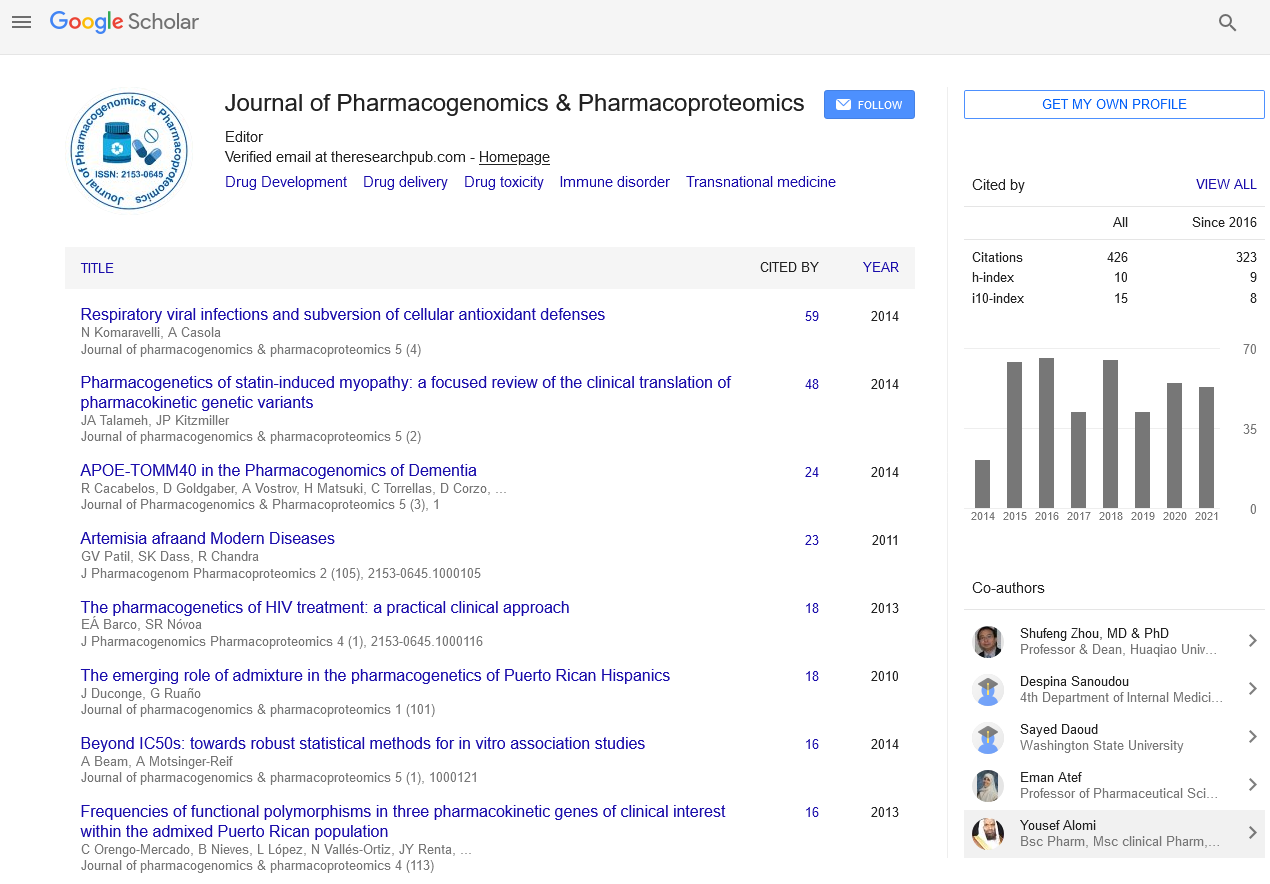Indexed In
- Open J Gate
- Genamics JournalSeek
- Academic Keys
- JournalTOCs
- ResearchBible
- Electronic Journals Library
- RefSeek
- Hamdard University
- EBSCO A-Z
- OCLC- WorldCat
- Proquest Summons
- SWB online catalog
- Virtual Library of Biology (vifabio)
- Publons
- MIAR
- Euro Pub
- Google Scholar
Useful Links
Share This Page
Journal Flyer

Open Access Journals
- Agri and Aquaculture
- Biochemistry
- Bioinformatics & Systems Biology
- Business & Management
- Chemistry
- Clinical Sciences
- Engineering
- Food & Nutrition
- General Science
- Genetics & Molecular Biology
- Immunology & Microbiology
- Medical Sciences
- Neuroscience & Psychology
- Nursing & Health Care
- Pharmaceutical Sciences
Abstract
Penicillin Production from Transformed Protoplast of Penicillium chrysogenum by Fermentation
M Sukumar, M Sundar and M Sivarajan
The Protoplast was prepared from the Penicillium chrysogenum and confirmed by microscopic observation and strains from the Penicillium chrysogenum were intrafused and protoplast was regenerated. The Penicillin was produced by fermentation method. The DNA was isolated from the Sclerotium rolfsii and it was characterized by electrophoresis and Protoplast of Penicillium chrysogenum was transformed with DNA of Sclerotium rolfsii. Penicillin was produced from transformed protoplast of Penicillium chrysogenum and at last HPLC was used to quantify the penicillin. Penicil - lin was isolated and purified and injected into experimental animals, where it was found not only to cure infections but also to possess incredibly low toxicity for the animals. This fact ushered into being the age of antibiotic chemotherapy, and an intense search for similar antimicrobial agents of low toxicity to animals that might prove useful in the treatment of infectious disease. Penicillium and Cephalosporium molds produce beta-lactam antibiotics such as penicillin and cephalosporin and their relatives. They also produce the base molecule for development of semisynthetic beta-lactam antibiotics, such as amoxacillin and ampicillin. Beta-lactams are used to treat about one-third of outpatients with bacte - rial infections.


